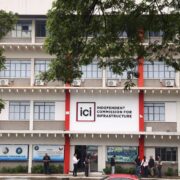Floods from a different lens

It literally rained on Apolinario Mabini’s parade last Wednesday. Heavy rain and resulting floods led to the cancellation of the commemoration of his 161st birth anniversary at the two Mabini Shrines: in Tanauan, Batangas (where he was born in 1864), and Manila (where he died in 1903). The Manila Shrine is one of my favorites, because in a simple wooden house with a thatch roof, you get a sense of how Mabini spent his last days before he succumbed to cholera from drinking fresh, unpasteurized carabao milk. “Mabini House” is a misnomer because it was not owned by the Sublime Paralytic. Rather, Apolinario was a long-term guest of his younger brother Agapito, who married into the family of Cecilio del Rosario, who owned the house that originally stood on Calle Nagtahan 21.
When Nagtahan, now Mabini Bridge, was built, the Mabini House was moved, literally a spitting distance, to Calle Nagtahan 23 to make way for the northern end of the bridge. Then it was moved a second time to the south bank of the Pasig River within the Malacañang Palace grounds, which later became the Presidential Security Group Camp. I first visited the Mabini Shrine in Pandacan in the 1980s, and didn’t have a problem gaining access by leaving my ID at the gate, but I guess most people would not even try. In 2009, yet another flood control project was implemented that required widening the Pasig River, where the Mabini house stood. Instead of moving the house within the camp, it was decided to relocate it to the Polytechnic University of the Philippines campus, further down the Pasig River, where it would be an inspiration to the students.
On the surface, the three moves of the Mabini house seem trivial, but put them in the context of waterways in the growth and urbanization of Manila. First, the house was moved to make way for a bridge connecting Pandacan and San Miguel, separated by the Pasig River. Before we became a nation of roads and traffic, before the introduction of the wheel, Filipinos saw the river as a connector rather than a separator, and crossed from one bank to the other by either swimming or taking a banca.
In Hong Kong today, there are three ways to travel from Kowloon to Hong Kong: by car through an underwater tunnel; by underground train, also through an underwater tunnel; then there is the old-fashioned Star Ferry. This ferry, with its upper (first-class) and lower (second-class) decks helped me visualize what the “Bapor Tabo” in the opening chapter of “El Filibusterismo” was like. Before the cross-harbor tunnel started operations in 1972, an alternative to the Star Ferry was the “walla-walla” or small noisy motorboat, which took people across outside ferry operating hours. Before the motorized boats, there were small, round, hand-paddled, flat-bottom wooden boats that ferried people across the so-called Fragrant Harbor.
In some early travel accounts of Manila, the city or rather the suburbs outside the walls of Intramuros, was described as a “Little Venice.” People and goods traveled from Manila Bay to Pasig and into a system of esteros that led to Binondo, San Nicolas, Quiapo, etc., in bancas or cascos (barges). It is a mystery why our planners can’t look back in history to make the Pasig River a viable alternative route from Pasig to Manila instead of Edsa.
History is not just about great men and great events; it is also about climate and geography. Reading up on flooding in the past for columns this week made me reflect on waterways, floods, and earthquakes. These are not mere natural challenges that humans have to respond to; they are neglected historical events to learn from. Whether we like it or not, climate and geography over the centuries, shaped who we are and what we have become. Fortunately, there are historians, like Greg Bankoff and James Warren, who have pioneered in teasing out the connection of nature to Philippine history.
In 2024, the Department of Public Works and Highways sought P215 billion for flood control. Former senator Grace Poe flagged it as bigger than the budget for school buildings, hospitals, and calamity funds. This week, we ask: Was that budget worth it? Historian Michael Pante has written two incisive articles that should help us revisit the social costs of high-impact flood control projects. “The Politics of Flood Control and the Making of Metro Manila” (2016) and “A cycle of floods and relocations: Metro Manila’s history of disaster-related resettlements” (2024) make for painful reading, not so much because the flood control projects over the last half-century have not stopped or mitigated flooding. Pante argues that “administrations from the 1960s to the present have allocated spaces along waterways for commercial activities, while forcing vulnerable families to move to far-flung hazardous sites that surround the metropolis.”
There is a growing historical literature that deals with nature, the environment, and disaster response that is hidden in academic journals. The insights from these should seep into our textbooks, figure in online discussions, and even be used to frame policy decisions. Floods and flooding in the Philippines shape us more than we care to know.
—————-
Comments are welcome at aocampo@ateneo.edu
Ambeth is a Public Historian whose research covers 19th century Philippines: its art, culture, and the people who figure in the birth of the nation. Professor and former Chair, Department of History, Ateneo de Manila University, he writes a widely-read editorial page column for the Philippine Daily Inquirer, and has published over 30 books—the most recent being: Martial Law: Looking Back 15 (Anvil, 2021) and Yaman: History and Heritage in Philippine Money (Bangko Sentral ng Pilipinas, 2021).


















‘When it rains, it pours’